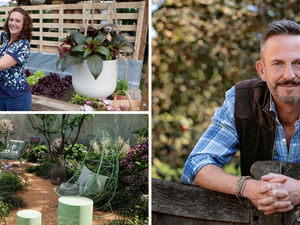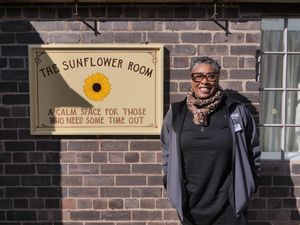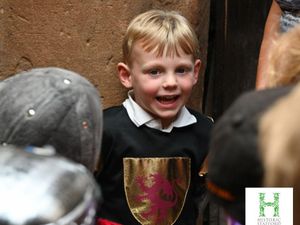Lions, tigers and painted dogs: Life in charge of the carnivores at West Midland Safari Park
From majestic lions to rare painted dogs, Chris Hodgkins works with some of the greatest hunters in the world at West Midland Safari Park.
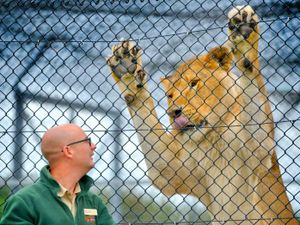
He has landed his dream job as head keeper of carnivores after working his way up the ladder since joining the ranks in 2003.
Now the 34-year-old oversees a team of between 20 and 26 keepers along with the care of the park’s African lions, white lions, Sumatran tigers, white tigers, cheetahs, African painted dogs and dholes.
“Everybody here is here because of their love of animals and they are all very passionate about what they do.
WATCH: Meet the carnivores with keeper Chris
“There is no one more dedicated to their job than these keepers,” says Chris, who grew up in Bewdley.
He first started working at the park as a seasonal keeper at the age of 18 but he had very nearly followed an alternative career path.
“I’ve always loved animals, I had a pet dog and budgie as a kid. It’s something I’ve always been passionate about but I was originally going to have a career in IT.
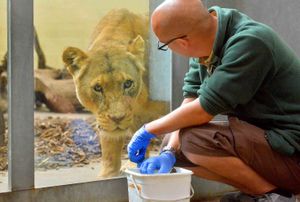
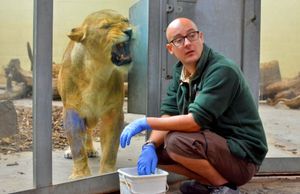
“Then I decided when I was 18 that although I enjoyed computers as a hobby, it wasn’t something I wanted to do as a 9-5 job. I wanted to be outdoors so I applied to be a keeper on the carnivores section,” Chris says.
He was promoted to a full-time role in 2006 and became a senior keeper in 2015 before being appointed to deputy head keeper of carnivores in 2017.
Then in July this year, his wish came true when he was promoted to the top role and Chris says he is loving every minute.
“Hard work and dedication paid off for me. I love everything about my job. No two days are ever the same, there is always something different going on,” says the father of two.
Health check
A typical day will start with the team checking on all of their charges to make sure they are in good health and are happy and content.
“The keepers will give them a visual health check and if they’ve got any worries they will ask me to have a look and we might call the vet.
“We will do a basic clean of the enclosures, removing any soiled bark or straw, whatever is used for bedding, any bones and washing away any wet patches from the floors.
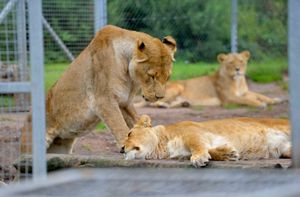
“We carry out safety checks on the reserves and check the fences. After our checks we will open up and do a deeper clean of things like the walls, troughs,feeding tubes and jet wash the floors,”explains Chris, who has a Diploma in the Management of Zoo and Aquarium Animals (DMZAA).
Among the animals in the team’s care is seven-year-old male lion Charlie who was named after Kidderminster toddler Charlie Harris Beard, who died from a rare form of leukaemia, following a Facebook campaign.
“Charlie is enormously huge because he was castrated and because he was castrated he doesn’t have a mane as he can’t produce testosterone,” says Chris.
Another of the African lions is fiery 14-year-old female Narla. “She can be very snarly. She’s the one the other cats are a bit wary of. Although she’s quite an angry cat, she’s actually very social and will go up to the others, rub heads and show affection,” Chris tells us.
Enrichment
Offering enrichment is also important part of the keepers’ duties as this encourages natural behaviours such as hunting.
They might do this by hiding meat or giving it to them in a challenging way by hanging the meat high in the enclosure.
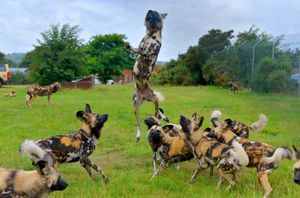
His deputy, Huw Owen-Jones, has been training Charlie to make it easier for the keepers to carry out vital health checks, take blood and give vaccinations or medication without the stress of having to sedate the animals.
They use positive reinforcement, or, in other words, chunks of meat - to persuade the big cats to do what’s required - it could be to open their mouth so a the team can check their teeth and gums are healthy or to lie down so they can administer an injection.
They use a target pole and when the lion touches it with his nose, he receives a reward. The keepers then train the cat to follow the target and to lie next to it, again rewarding them with a meaty treat when they get it right.
“They soon clock on what you want and what will get them their reward. When they are lying down, we can take blood or give them a vaccination. We get them used to there being a second person by they are lying down - this person puts the needle in.

“They will lie there munching on a little bit of meat and they don’t even notice it going in,” explains Chris.
The length of time it takes to train them varies depending on the species and the individual cat.
“I could take four weeks or it could take eight months. Lions are easier to train because they are more relaxed, tigers can be more difficult because they are more aware of their surroundings.
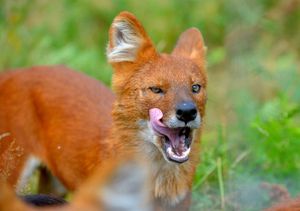
“Lions live in prides so they are used to having lots going on around them, tigers are solitary animals. You have to build that trust up. They’ve all got their different characters and personalities,” Chris says.
Favourite?
Chris says he can’t pick favourite out of his charges because he has “soft spots for them all” but one of the park’s previous residents still holds a special place in his heart.
Male Sumatran tiger Emas - an Indonesian name meaning golden - joined the park from Dublin Zoo in 2011 before moving on to Rotterdam Zoo a few years later.
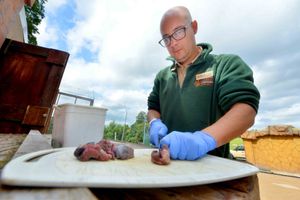
Chris played an integral role in preparing the big cat for his journey overseas. “Rather than sedate him to get him in the crate, I trained him to get used to crate so he could walk in and be locked in to be transported.
“He was very nervous of people and there was only one person who could get him in from the enclosure at night and that was me.
“On moving day I was nervous because it was a completely different crate - even just small changes can throw an animal back - and there were lots of people around.
“I put some meat in create and spoke to him in a nice tone and positive voice and he walked right in. I shut the door and then it broke my heart because I knew he was really going,” he tells Weekend.
But a few years ago Chris travelled to Holland to see Emas settled in his new home. “I would like to think he recognised me,he probably didn’t, but it was nice to see him,” he says.



